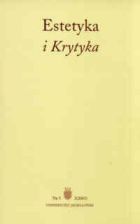Prześladowania Talmudu w XVIII-wiecznej Rzeczypospolitej
Talmud’s Persecution in the 18th Century in Poland
Author(s): Robert DublańskiSubject(s): Philosophy, Theology and Religion, History of Religion
Published by: Wydawnictwo Uniwersytetu Jagiellońskiego
Summary/Abstract: In Poland in the 18th century both Jews and Christians were interested in Talmud and its teaching. In Jewish societies the Jews carefully investigated the content of. They also cared about publishing the Talmud and about importing the copies from abroad. However not all the Jews (belonging to different heterodox movements) showed such an interest in promoting the Talmud. Some of them even fought against it. Christians’ attitude to the Talmud was unchanged in this time and it caused the hostility between the Jewish and Christian (especially catholic) communities. The Catholic’s approach is presented in this article in two cases: bishop Franciszek Kobielski and bishop Mikołaj Dembowski. Bishop Kobielski clearly showed his attitude towards the Talmud at a time of his managing of the dioceses Łuck and Brześć in the years 1739-1755. This attitude was differently evaluated by historians: some of them show Kobielski as an enemy of the Jews and others as their friend. Kobielski was the most famous for the Christianization of the Jews, and for his unique program of preaching to them. He used Jewish literature, but omitted the Talmud. It is worth mentioning that Kobielski knew the origins of the Talmud, but he forbade using it. According to him the Talmud is a blasphemous book. He tried to show it in 23 points. The case of Bishop Mikołaj Dembowski is a much different. He tried to promote the peaceful coexistence between Jews and Christian in 18th century Poland. He was viewed by his contemporaries as the protector of Frank- and Shabbat-movements. He organized the debates between Jews and Christians in Kamieniec (1757) and Lvov (1758). Some of them ended with the public act of burning the copies of Talmud. The attitude against the Talmud can be noticed even in the Jewish community in these times. For example doctrine of the mentioned above two Jewish movements based mainly on the Kabala with rejection of the Talmud and rabbinical codes.
Journal: Estetyka i Krytyka
- Issue Year: 27/2012
- Issue No: 3
- Page Range: 311-320
- Page Count: 10
- Language: Polish

